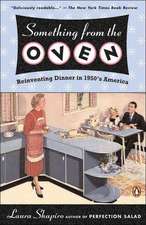Litigation, Courts, and Women Workers
Autor Karen Maschkeen Limba Engleză Hardback – 22 iun 1989
From the larger field of women and employment law, Maschke has carved out a study that focuses exclusively on the impact Title VII of the 1964 Civil Rights Act has had on women workers. . . . Maschke focus es] on the history of women workers from the days of protective laws, through the difficult birth of the Equal Employment Opportunity Commission, to present-day struggles involving pregnant workers, sexual harassment, and comparable worth. Although legalistically oriented, the book is also attuned to the political in noting diverse strategies among women's organizations and the varying congressional and presidential commitments to the promotion of the equality of women's workers. . . . Concise and readable with a select bibliography and index. "Choice"
A major contribution to the literature on the legal rights of women workers, this volume combines empirical investigation and case law analysis to provide a thorough study of sex discrimination litigation under Title VII of the Civil Rights Act of 1964. As the author notes at the outset, Title VII, although not a panacea for sex discrimination, is the most important federal statute guaranteeing equality in the workplace for women workers. Her study examines how women have fared in Title VII litigation and how the Equal Employment Opportunity Commission (EEOC), as the government's enforcement agency, played a role in Title VII litigation and in the development of legal policy in this area.
Divided into three major sections, the volume begins by exploring the protective labor laws that restricted women's job opportunities at the turn of the century. Maschke goes on to trace the origins of Title VII and to examine the political controversy surrounding the use of litigation to enforce Title VII. The second section analyzes the development of law resulting from cases involving pregnancy discrimination, sexual harassment, wage discrimination, and protective policies. In addition to case law analysis, these chapters examine the EEOC's response to the issues and demonstrate that the agency has often been inconsistent in developing sex discrimination policies. In the final section, Maschke addresses group and EEOC litigation activities in sex discrimination cases, focusing on aspects of decision making in the federal courts. The concluding chapter considers how courts and the litigation process played a role in expanding the rights of women workers.
Preț: 343.21 lei
Preț vechi: 474.86 lei
-28% Nou
65.68€ • 68.39$ • 55.51£
Carte tipărită la comandă
Livrare economică 10-24 martie
Specificații
ISBN-10: 0275930653
Pagini: 118
Dimensiuni: 140 x 216 x 11 mm
Greutate: 0.31 kg
Editura: Praeger Publishers
Colecția Praeger
Descriere
A major contribution to the literature on the legal rights of women workers, this volume combines empirical investigation and case law analysis to provide a thorough study of sex discrimination litigation under Title VII of the Civil Rights Act of 1964. As the author notes at the outset, Title VII, although not a panacea for sex discrimination, is the most important federal statute guaranteeing equality in the workplace for women workers. Her study examines how women have fared in Title VII litigation and how the Equal Employment Opportunity Commission (EEOC), as the government's enforcement agency, played a role in Title VII litigation and in the development of legal policy in this area.
Divided into three major sections, the volume begins by exploring the protective labor laws that restricted women's job opportunities at the turn of the century. Maschke goes on to trace the origins of Title VII and to examine the political controversy surrounding the use of litigation to enforce Title VII. The second section analyzes the development of law resulting from cases involving pregnancy discrimination, sexual harassment, wage discrimination, and protective policies. In addition to case law analysis, these chapters examine the EEOC's response to the issues and demonstrate that the agency has often been inconsistent in developing sex discrimination policies. In the final section, Maschke addresses group and EEOC litigation activities in sex discrimination cases, focusing on aspects of decision making in the federal courts. The concluding chapter considers how courts and the litigation process played a role in expanding the rights of women workers.

















